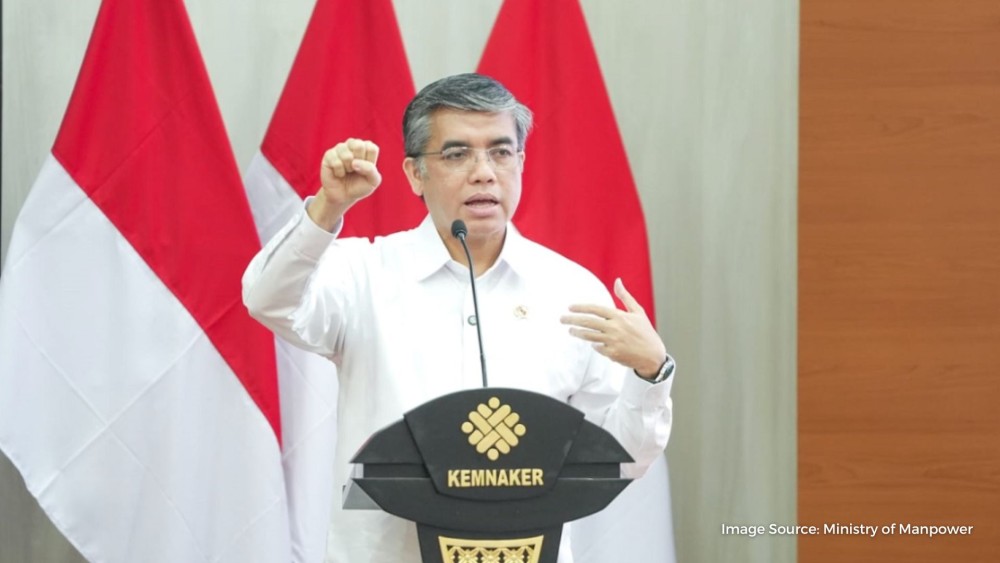This Week’s Headlines (Nov. 1 – Nov. 7, 2025)
07 Nov 2025

Indonesia’s Trade Surplus Extends to 64 Months Since May 2020, Hits USD 4.34 Billion in September 2025
Indonesia booked another trade surplus in September 2025 at USD 4.34 billion, extending its winning streak to 64 consecutive months since May 2020, according to the Central Statistics Agency (BPS) on Monday.
The figure, however, narrowed from August’s USD 5.49 billion surplus, marking a decline of about USD 1.15 billion. Compared to September 2024, when the surplus stood at USD 3.18 billion, this year’s gain was higher by USD 1.16 billion.
“Indonesia’s trade balance in September this year posted a surplus as exports reached USD 24.68 billion, while imports also rose to USD 20.34 billion,” said Pudji Ismartini, BPS Deputy for Distribution and Services Statistics, during a press briefing in Jakarta.
BPS data showed that exports grew 11.41% year-on-year in September 2025, mainly supported by a 12.79% increase in non-oil and gas shipments. Key export commodities included gold and jewelry, which jumped 5.66% annually.
Indonesia’s exports for January–September 2025 reached USD 209.8 billion cumulatively, up 8.14% compared to the same period last year. The export performance was underpinned by strong manufacturing sector growth, which climbed 12.58% year-on-year.
Indonesia’s top three export destinations during the period were China (USD 46.47 billion), the United States (USD 23.03 billion), and India (USD 14.02 billion).
Imports rose 7.17% year-on-year in September, reversing the 6.56% contraction seen in the previous month. Non-oil and gas imports grew 7.62% to USD 17.70 billion, while oil and gas imports rose 4.29% to USD 2.64 billion.
By type, consumer goods imports increased 4.06%, raw and auxiliary materials edged up 0.21%, and capital goods imports surged 28.02%, contributing a 5.28% rise overall.
Pudji noted that China, Japan, and the United States remained Indonesia’s top three import partners, accounting for 52.71% of total imports from January to September 2025.
From a trading partner perspective, Indonesia recorded its largest trade surpluses with the United States (USD 13.48 billion), India (USD 10.45 billion), and the Philippines (USD 6.54 billion) during the January–September 2025 period.
However, trade deficits persisted with China (USD 14.32 billion), Australia (USD 4.01 billion), and Thailand (USD 1.29 billion).
The September trade surplus was primarily driven by non-oil and gas commodities, which recorded a USD 5.99 billion surplus. The biggest contributors were animal and vegetable fats and oils (HS 15), mineral fuels (HS 27), and iron and steel (HS 72).
Meanwhile, the oil and gas sector continued to post a USD 1.64 billion deficit, mainly due to crude oil and its derivative products.
From a broader perspective, Indonesia’s trade balance for January–September 2025 recorded a USD 33.48 billion surplus, an increase of USD 11.3 billion from USD 22.18 billion in the same period last year.
“Indonesia has successfully maintained a trade surplus for 64 consecutive months since May 2020,” Pudji said.
Source: Jakarta Globe
Manufacturing PMI Ticks Up on Rising New Orders
Manufacturing activity in Indonesia showed a modest improvement in October as new orders increased despite looming cost pressures, according to a monthly survey published by S&P Global.
The country’s Purchasing Managers’ Index (PMI) rose to 51.2 in October from 50.4 in the preceding month, marking the third consecutive month the index has remained above the 50-point threshold between expansion and contraction.
“Demand conditions were positive, as sales rose solidly, contributing to increases in employment and purchasing activity,” said Usamah Bhatti, economist at S&P Global Market Intelligence, in a statement published on Monday.
Manufacturers saw rising new orders for the third consecutive month, with the rate of growth at the joint-strongest since March and equal to that seen in August. Respondents in the survey also suggested that domestic market activity had improved, encouraging local clients to place additional orders. Expansion was domestic-driven, as manufacturers pointed to a second successive fall in new export business amid muted demand from international markets.
Additionally, firms increased capacity, with employment levels rising for the third straight month and at the steepest rate in five months.
Meanwhile, factory output was unchanged from September after a slight fall in the previous survey period, as companies used existing stock to fulfill incoming orders.
“Production volumes appeared to lag slightly, however, coming in at the neutral level as some manufacturers cited exhausted existing inventories of finished items in the first instance,” Usamah added.
Firms saw a reduction in backlogs of work for the seventh consecutive month amid soft capacity pressure. The pace of depletion was marginal but the slowest since June.
Usamah also noted that price pressures remained acute, with goods producers citing the sharpest uptick in average cost burdens in eight months amid reports of higher raw material prices.
“That said, firms were hesitant to fully pass through higher expenses to clients, as factory gate charges rose only fractionally as part of efforts to remain competitive on price,” he said.
Looking ahead, business confidence for the next 12 months dipped from the level recorded in September and was below the series average.
However, businesses remained optimistic for the coming year, supported by projected stronger demand and new product launches.
Data from the Industry Ministry also showed a modest increase in October in the ministry’s own Business Confidence Index (IKI), which edged up to 53.5 points from 53.02 in September.
Twenty-two of the 23 manufacturing subsectors were in expansionary territory, contributing 98.8% to gross domestic product (GDP) from the non-oil and gas industry sector.
“One subsector experienced contraction, which is textiles, as it’s still impacted by a domestic consumption slowdown and pressure from rising imports of yarns and fabrics,” said Industry Ministry spokesperson Febri Hendri Antoni Arif on Thursday, as quoted in a press release.
According to the ministry, the index improvement in October was also underpinned by stronger demand and output that remained in expansionary territory, though production was still contracting.
The ministry also underscored that industrial performance from both export- and import-oriented sectors improved in October. “We've seen a rebound in government spending for products from domestic industries,” Febri stated.
Commenting on the latest PMI report, the ministry said in a press release on Monday that the S&P Global survey did not produce as detailed a picture of industrial conditions as the IKI survey, partly due to a smaller sample size.
However, Industry Minister Agus Gumiwang Kartasasmita was quoted in the release as saying that the S&P data showed “an increase in employment absorption at the fastest pace since May 2025. This is a good sign because industrial activity is once again driving job creation.”
Source: Jakarta Post
COP30: Indonesia Pledges Stronger Climate Action at Leader Summit
Indonesia reaffirmed its commitment to strengthening national climate action during the Belém Leader Summit in Brazil, according to President Prabowo Subianto’s Special Envoy for Climate and Energy, Hashim Djojohadikusumo.
“Indonesia comes to Belém with a clear message: a strong initiative to enhance our national climate commitments and readiness to cooperate with all countries for real, inclusive, and ambitious climate action,” Hashim said in Belém, Brazil, on Thursday.
He led the Indonesian delegation to the summit, which was held ahead of the 30th UN Conference on Climate Change (COP30).
“As Indonesia’s Special Envoy for Climate and Energy, I represent President Prabowo Subianto, who is unable to attend this distinguished conference of parties,” he said.
Hashim mentioned that Prabowo had reaffirmed Indonesia’s commitment to the Paris Agreement target of achieving net-zero emissions by 2060 or sooner during the UN General Assembly.
“Indonesia is also committed to achieving a higher, sustainable growth target of 8%,” Hashim said.
“Our green growth strategy is reflected in the Second Nationally Determined Contribution (SNDC), which sets a CO₂ equivalent emissions cap of 1.2 gigatonnes (GT) in the low scenario and 1.5 GT in the high scenario by 2035,” he added.
At the Belém summit, Hashim also highlighted Indonesia's plan to raise the renewable energy share to 23% of the national energy mix by 2030.
“This includes the development of other technologies such as nuclear power as part of our clean energy transition,” he said.
Other members of the Indonesian delegation included Environment Minister Hanif Faisol Nurofiq and Forestry Minister Raja Juli Antoni.
The Belém Leader Summit, held on November 6–7, served as a preparatory meeting for COP30, gathering world leaders to discuss global climate action.
Source: Antara News






